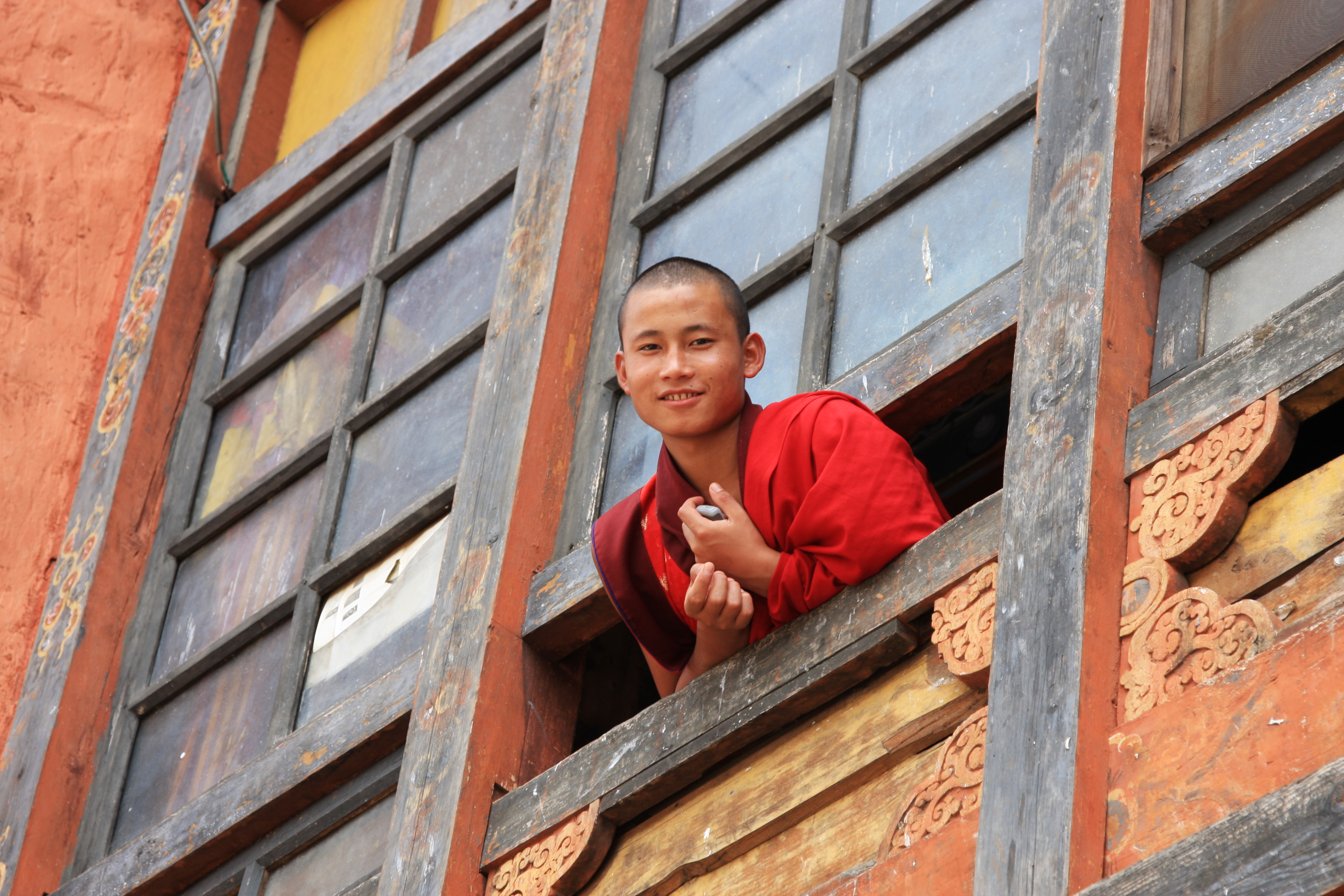“Where?”
I asked when offered the opportunity to travel to this tiny kingdom situated between two giants: China and India. The Himalayas have kept Bhutan hidden and inaccessible. Fewer than 5000 visas are issued each year.
Bhutanese cherish their isolation as a way to preserve their culture. And why shouldn’t they when they live in a country that measures gross national happiness factor GHF instead of GNP or GDP? Every policy of the governement must be considered in terms of its impact on the happiness of the citizens. The people protesting on Wall Street at the moment might like to propose something similar for the US. Happiness can be spotted on this young man’s face as he looks out of his school’s window.
There are two roads in Bhutan, no stop lights, no Starbucks nor McDonalds. Druk Airlines flies one plane in and out a couple times per week. Computers arrived about 10 years ago and are still rare. Free from outside influences, the creative spirit thrives. Ideas come from within; imagination not popular culture feeds the end result. Look at the colors, forms, light and shadows in this temple.
Why is Bhutan relevant to art? Most Westerners have never heard of the place much less a famous artist from there. And yet, through an extraordinary invitation from the United States Department of State, Bhutanese artists were invited to Washington DC to work and display their art. I was able to visit them in Bhutan at the National Institute for Folk Arts, to see artmaking traditions, pure of outside influences, continue. The students have a wonderful energy as they work to improve their skills.
Everyone including the students, wears the native costume, beautiful woven fabrics wrapped around the waist. Few people are seen in jeans or t-shirts but the law requires citizens to wear the centuries-old constume. This student wants to design clothing. Clear evidence that outside influences are present can be seen in the drawings as the clothing is unlike anything people in Bhutan wear.
Many other types of media:sculpture, iron works, papermaking, bookmaking, and weaving are alive and well. The end result of many centuries of this artistic tradition can be seen in the composition, sensibility to color and pattern and adaptibility to the form and function of the objects and buildings. Many themes like these skeletons can be seen around the world.
Images of dragons abound with many wonderful myths and stories. My favorite is the one about the national hero who fought off the invaders by swinging his extraordinary and then some, phallus at them. The enemy fleed in fear. Many houses have paintings of the legendary phallus, unaware of how surprising these images are to Westerners.
The King of Bhutan with the support of his heir, declared that Bhutan should become a democracy. In an incredible gesture to have his country enter the modern world, citizens walked for days to reach their home villages in order to vote. When I was there, visiting lawyers from the US and other countries were chattting in cafes with government officials, drafting the first constitution of Bhutan! I overheard a conversation about what freedom of speech is and how it should work–in a country that dictates what clothes you can wear.
Yet, witnessing all of this–the old traditions with the struggle to modernize in the right way–was an incredible previlege.
As globalization moves our world closer together, what will happen to cultures like Bhutan? Will these artists begin to paint images like the rest of the world? What can or should be done to preserve the skills and talents of the past? Comment with your ideas about this dilemma.











